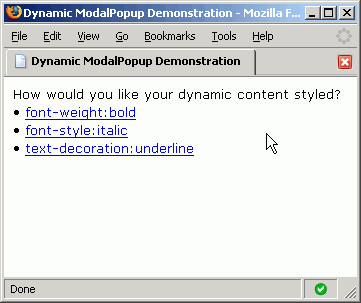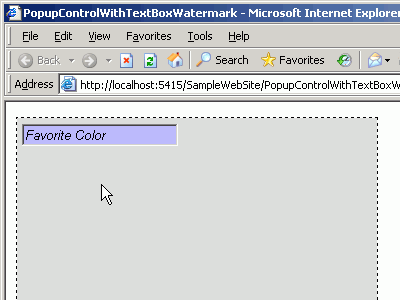Another quick, small-scale release [AJAX Control Toolkit update!]
Just a short while ago we made available the 61121 release of the AJAX Control Toolkit. I'd barely finished posting the release bits to CodePlex and was still in the process of verifying them when I saw that we'd already had our first eight customer downloads. Wow, those people must really want the latest stuff! :)
The 61121 release was all about addressing some of the biggest pain points for our customers. Of particular note were two workarounds for ASP.NET AJAX Beta 2 issues:
- The first addresses an issue where the Toolkit had a hard dependency on Microsoft.Web.Extensions.Design.dll, a file that isn't installed by ASP.NET AJAX Beta 2 on machines that don't have some flavor of Visual Studio already installed. This dependency can cause obvious issues for web servers since they usually do not have development tools like Visual Studio installed.
- The second addresses an issue where ASP.NET AJAX Beta 2 doesn't render the ScriptManager/extenders out to the page during an async postback if EnableEventValidation=false - meaning that the relevant extenders simply don't get recreated after an UpdatePanel postback. We reported this issue to the ASP.NET AJAX team prior to Beta 2, but there wasn't time for them to fix it in that release (don't worry, they'll be fixing it in their next release!). We'd implemented a workaround for this issue in our earlier 61106 release, but it applied only to CascadingDropDown (which is the only control that requires EnableEventValidation=false). Subsequent customer feedback prompted us to move that workaround up a level for this release so that it now applies to the entire Toolkit.
In addition to those two "big ticket" items, we also fixed a handful of other issues, most of which we chose based on customer feedback and work item voting on CodePlex. (Voting is a fairly recent addition - have a look at how it focuses attention on issues that are important to the community!). The other fixes in the 61121 release address the most popular issues in our CodePlex queue and include fixes for ModalPopup server-side show/hide, ClientState within an UpdatePanel, Accordion pane size updates, multiple DragDrop panels, CommonToolkitScripts, and web.config updates to get things working seamlessly with IIS7.
This being small-scale release, we didn't have time to include any new controls this time around. :( However, that's an explicit goal for an upcoming release which we hope to make available before the end of the year. We've got some neat stuff in the prototype stage and it'll be great to get some of it polished and released to the world!
Recall that you can sample any of the controls right now (no install required). Then you can browse the project web site, download the latest Toolkit, and start creating your own controls and/or contributing to the project!
If you have any feedback, please share it with us on the support forum (or email me)!

